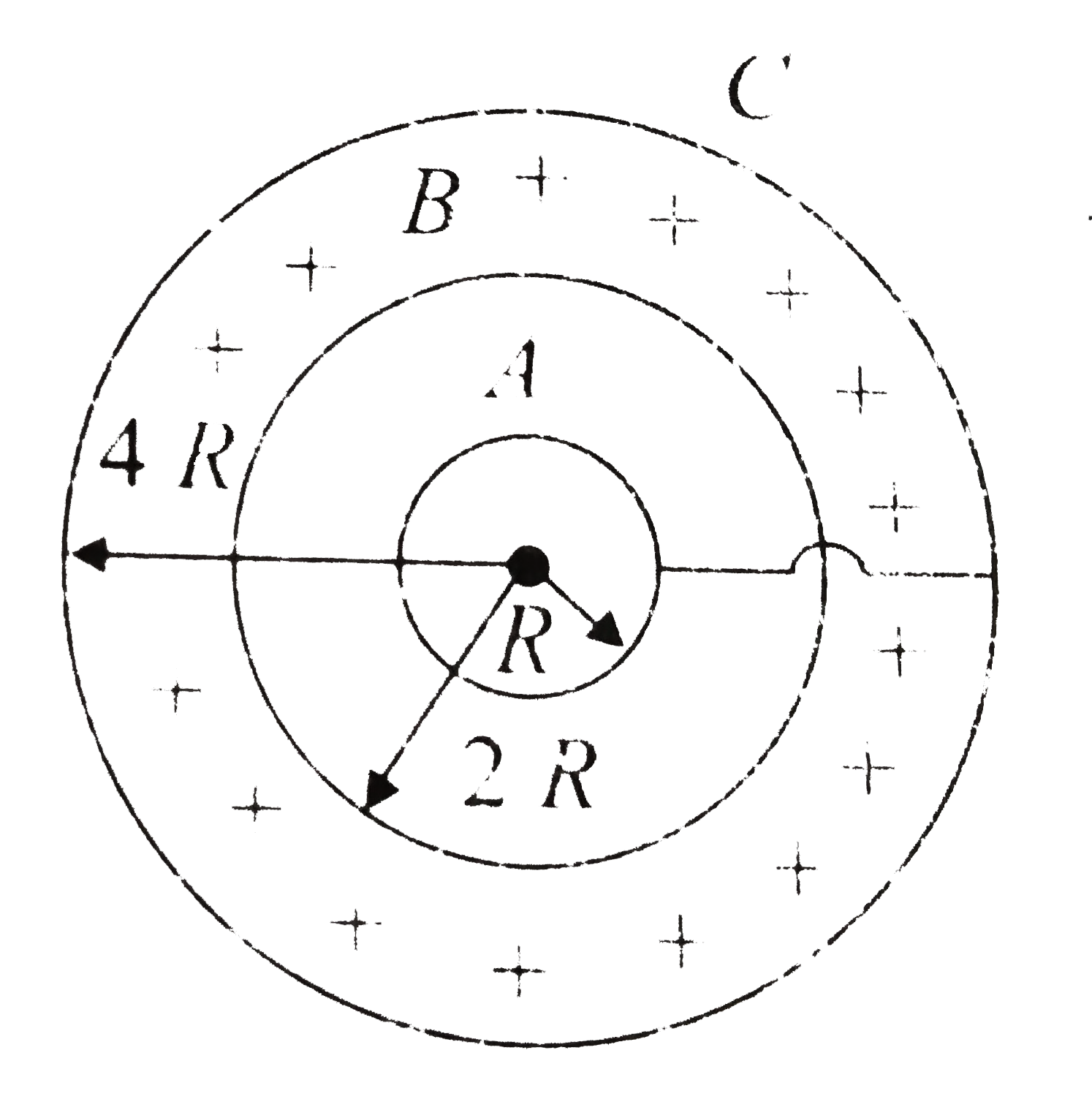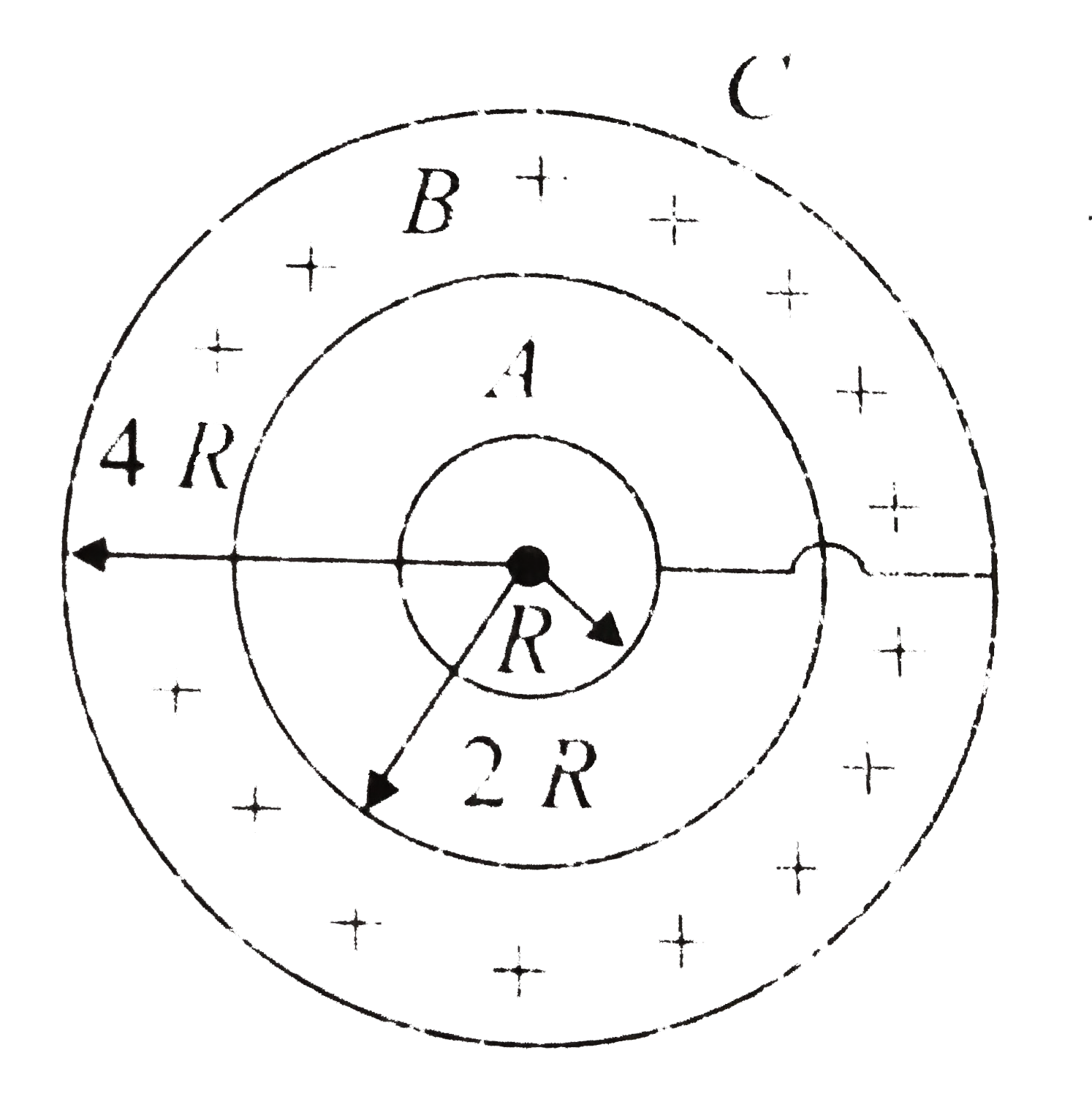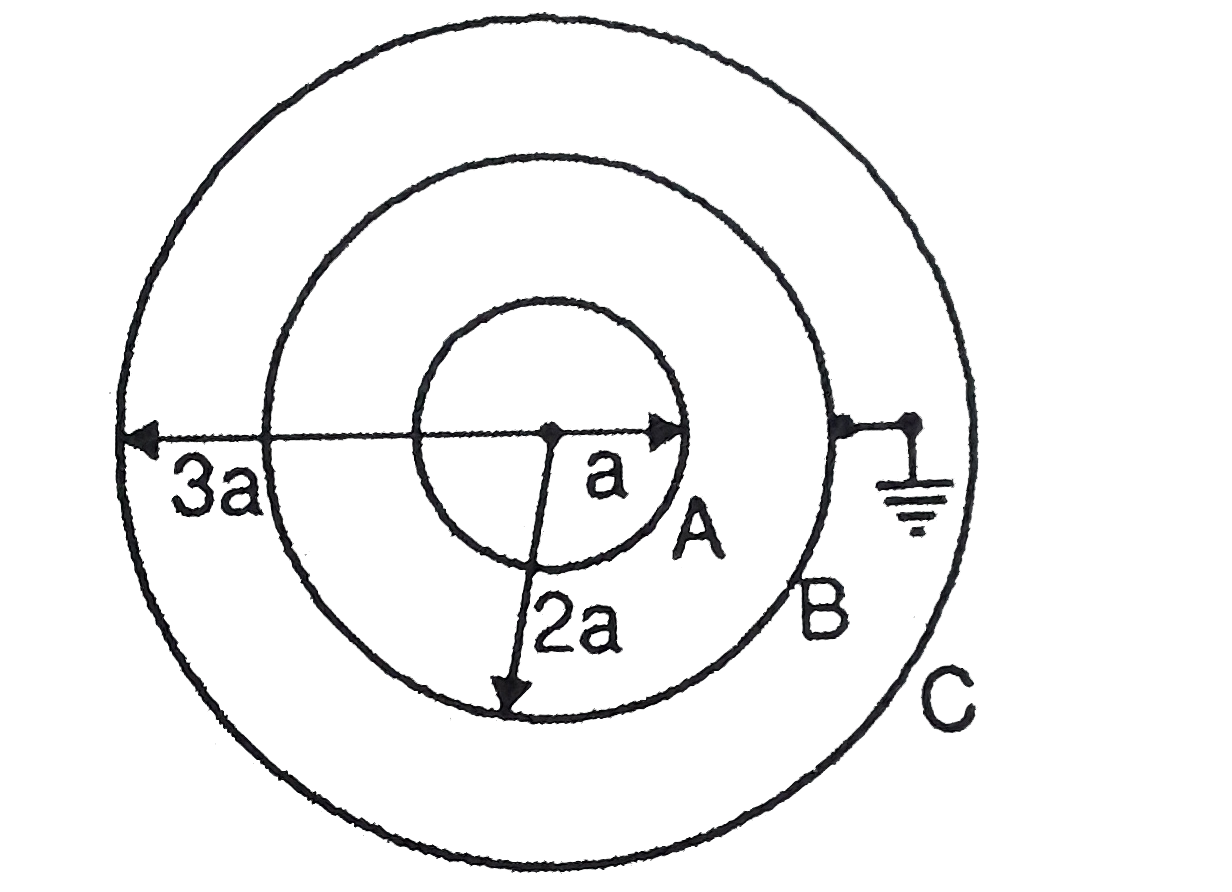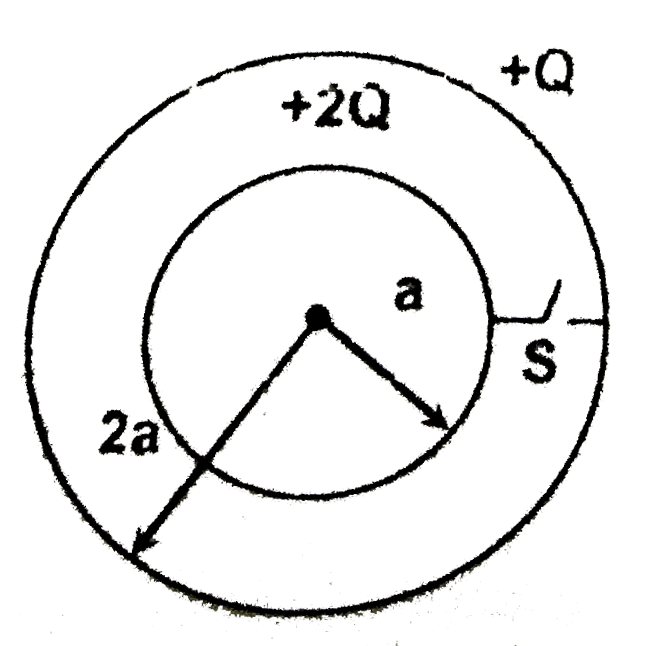There are four concentric shells A,B, C and D of radii a,2a,3a and 4a respectively. Shells B and D are given charges +q and −q respectively. Shell C is now earthed. The potential difference VA−VC is k=(14πε0)
Kq2a
Kq3a
Kq4a
Kq6a
The correct Answer is:D
To solve the problem, we need to find the potential difference VA−VC given the configuration of the concentric shells and their charges.
1. Identify the Charges and Radii:
- Shell A has radius a and no charge.
- Shell B has radius 2a and charge +q.
- Shell C has radius 3a and is earthed (potential VC=0).
- Shell D has radius 4a and charge −q.
2. Calculate the Potential at Shell C (VC):
Since shell C is earthed, its potential VC=0. The potential at shell C due to the charges on shells B and D can be calculated as follows:
VC=kq2a+−kq4a
Here, k=14πϵ0.
Substituting the values:
VC=kq2a−kq4a=2kq4a−kq4a=kq4a
Since VC=0 (because it is earthed), we have:
kq4a+kQ′3a=0
where Q′ is the induced charge on shell C.
3. Find the Induced Charge on Shell C (Q′):
Rearranging the equation gives:
kQ′3a=−kq4a
Simplifying this, we find:
Q′=−q4
4. Calculate the Potential at Shell A (VA):
The potential at shell A due to the charges on shells B, C, and D is given by:
VA=kq2a+kQ′3a−kq4a
Substituting Q′=−q4:
VA=kq2a−kq/43a−kq4a
Now, substituting the values:
VA=kq2a−kq12a−kq4a
To combine these terms, we need a common denominator (12a):
VA=6kq12a−kq12a−3kq12a=(6−1−3)kq12a=2kq12a=kq6a
5. Calculate the Potential Difference (VA−VC):
Since VC=0:
VA−VC=VA=kq6a
Final Result:
The potential difference VA−VC=kq6a.
- Shell A has radius a and no charge.
- Shell B has radius 2a and charge +q.
- Shell C has radius 3a and is earthed (potential VC=0).
- Shell D has radius 4a and charge −q.
Since shell C is earthed, its potential VC=0. The potential at shell C due to the charges on shells B and D can be calculated as follows:
VC=kq2a+−kq4a
Here, k=14πϵ0.
VC=kq2a−kq4a=2kq4a−kq4a=kq4a
kq4a+kQ′3a=0
where Q′ is the induced charge on shell C.
Rearranging the equation gives:
kQ′3a=−kq4a
Simplifying this, we find:
Q′=−q4
The potential at shell A due to the charges on shells B, C, and D is given by:
VA=kq2a+kQ′3a−kq4a
Substituting Q′=−q4:
VA=kq2a−kq/43a−kq4a
Now, substituting the values:
VA=kq2a−kq12a−kq4a
To combine these terms, we need a common denominator (12a):
VA=6kq12a−kq12a−3kq12a=(6−1−3)kq12a=2kq12a=kq6a
Since VC=0:
VA−VC=VA=kq6a
The potential difference VA−VC=kq6a.
Topper's Solved these Questions
- ELECTROSTATIC POTENTIAL AND CAPACITORSBook:DC PANDEY ENGLISHChapter:ELECTROSTATIC POTENTIAL AND CAPACITORSExercise:(B) Chapter exercises
Explore 17 Videos
- ELECTROSTATIC POTENTIAL AND CAPACITORSBook:DC PANDEY ENGLISHChapter:ELECTROSTATIC POTENTIAL AND CAPACITORSExercise:(C) Chapter exercises
Explore 50 Videos
- ELECTROSTATIC POTENTIAL AND CAPACITORSBook:DC PANDEY ENGLISHChapter:ELECTROSTATIC POTENTIAL AND CAPACITORSExercise:Check point 2.5
Explore 20 Videos
- ELECTROMAGNETIC WAVESBook:DC PANDEY ENGLISHChapter:ELECTROMAGNETIC WAVESExercise:Sec C
Explore 22 Videos
- ELECTROSTATICSBook:DC PANDEY ENGLISHChapter:ELECTROSTATICSExercise:Medical entrances gallery
Explore 37 Videos
Similar Questions
Four concentric conducting spherical shells A, B, C and D of radii a, 2a, 3a and 4a respectively. Shell B and D are given charges q and −q respectively. If shell C is grounded then potential difference (VA — VC) is
View SolutionFigure shows three concentric thin spherical shells A, B and C of radii a, b, and c. The shells A and C are given charge q and -q, respectively, and shell B is earthed. Then,
View SolutionFigure shows three concentric thin spherical shells A, B and C of radii a, b and c respectively. The shells A and C are given charges q and -q respectively and the shell B is earthed. Find the charges appearing on the surfaces of B and C.

View SolutionFigure shows three concentric thin spherical shells A, B and C of radii a, b and c respectively. The shells A and C are given charges q and -q respectively and the shell B is earthed. Find the charges appearing on the surfaces of B and C.

View SolutionThree concentric spherical conductors A, B, and C of radii r, 2R, and 4R, respectively. A and C is shorted and B is uniformly charged (charge +Q).

Potential at B is
View SolutionThree concentric spherical conductors A, B, and C of radii r, 2R, and 4R, respectively. A and C is shorted and B is uniformly charged (charge +Q).

Potential at A is
View SolutionFigure shows a system of three concentric metal shells, A, B and C with radii a, 2a and 3a respectively. Shell B is earthed and shell C is given a charge Q. Now if shell C is connected to shell A, then find the final charge on the shell B

View SolutionTwo concentric conducting shells of radii R and 2R are having charges Q and -2Q respectively.In a region r
View SolutionTwo concentric spherical conducting shells of radii 'a' and 2a are initially given charges +2Q and +Q respectively as shown. The total heat dissipated after switch 'S' has been closed is (where k=14πε0)

View SolutionThere are two concentric conducting spherical shells of radius rA and rB respectively (rB=2rA). If the inner shell is given a charge Q and outer shell is given a charge 2Q, then the potential difference between the surfaces of the shells will be K=14πε0
View Solution
